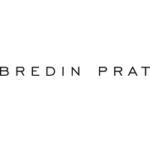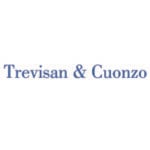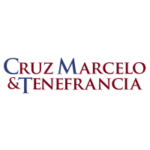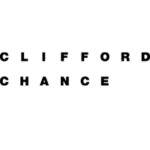-
What types of conduct and causes of action can be relied upon as the basis of a competition damages claim?
The Anti-Monopoly Law of the People’s Republic of China (Revised in 2022) (“AML”) provides the ground for private actions by undertakings who have suffered losses caused by monopolistic conducts, and there are three types of monopolistic conducts stipulated: monopoly agreements, abuse of dominant market position, and concentration of undertakings that leads or may lead to anti-competitive effects.
In the Several Issues concerning the Application of Law in the Trial of Civil Dispute Cases Arising from Monopolistic Conduct (“2012 AML Judicial Interpretation”) issued by the Supreme People’s Court of the People’s Republic of China (“SPC”) in 2012, the SPC makes detailed explanations regarding the relevant issues on competition damages claim. These causes of actions have been listed in the Notice of the SPC on the Promulgation of the Revised Regulations on Causes of Action for Civil Case as well. However, among the three types of conduct, private actions against concentration of undertakings that lead or may lead to anti-competitive effects still stays at the legislative and theoretical level, and no action has been commenced on this ground in practice.
On November 18, 2022, the SPC published an announcement soliciting public comments on the draft of Provisions on Several Issues concerning the Application of Law in the Trial of Monopoly-related Civil Dispute Cases (the “2022 Draft AML Judicial Interpretation”). On June 24, 2024, the SPC formally issued the new Several Issues concerning the Application of Law in the Trial of Civil Dispute Cases Arising from Monopolistic Conduct (“2024 AML Judicial Interpretation”), which comes into effect on July 1, 2024. The 2012 AML Judicial Interpretation will then be voided. The 2024 AML Judicial Interpretation did not change the types of conduct and causes of action that could be relied upon as the basis of a competition damages claim.
-
What is required (e.g. in terms of procedural formalities and standard of pleading) in order to commence a competition damages claim?
The Civil Procedure Law of the People’s Republic of China (“CPL”) provides the requirements for instituting a civil lawsuit and there are no additional or special provisions on competition damages claim. According to CPL, the requirements to commence a competition damage claim include:
- the claimant(s) must be a natural person(s), legal person(s), or other organization(s) with a direct stake in the case;
- there must be a specific defendant(s);
- there must be specific claim(s), facts, and reasons; and
- the lawsuit must fall within the scope of acceptance of civil lawsuits by the courts, and the jurisdiction of the court which accepts the lawsuit.
Indirect purchasers are also qualified to commence a competition damages claim as long as they could preliminarily prove that they suffered from the alleged monopolistic conduct.
In addition, pursuant to Article 2 Paragraph 2 of 2024 AML Judicial Interpretation, if the plaintiff files a lawsuit solely requesting the people’s court to confirm that the defendant’s specific conduct constitutes monopolistic behavior, without seeking civil liability from the defendant, the people’s court will not accept the case.
-
What remedies are available to claimants in competition damages claims?
The AML does not set limitation on the types of remedies for injuries available to the claimants of competition damages claims. Nonetheless, competition damages claim is considered as a kind of tort litigations in China, therefore, all the rules of tort litigations are applicable to competition damages claims. In conjunction with damages claims, the claimants may bring declaratory or injunctive claims as well. The AML specifically provides that the civil liabilities of the antitrust infringers include cessation of infringement, restitution of the original state, compensation for loss and others which the typical claims in the competition damages cases.
According to Article 43 of 2024 AML Judicial Interpretation, in addition to legal liabilities such as compensating the claimant for the economic damages, if the defendant is found to have conducted illegal monopolistic conducts, the people’s court may order defendant to take certain actions to restore competition, which can further improve the effectiveness of judicial remedies. The conducts that courts can order to restore competition in judicial practice may include terminating the anticompetitive arrangements such as the exclusive agreement, unreasonable transaction conditions, discriminative transaction clauses, etc.
-
What is the measure of damages? To what extent is joint and several liability recognised in competition damages claims? Are there any exceptions (e.g. for leniency applicants)?
According to Article 43 of 2024 AML Judicial Interpretation, the courts may, considering the claimant’s claims and finding of facts, order the defendant to cease infringement, compensate for losses, and otherwise assume civil liability in accordance with law. Also, according to Article 45 of 2024 AML Judicial Interpretation, subject to the claimant’s claims, the courts may order the defendant to compensate the claimant’s reasonable expenses on investigation and prevention of the monopolistic conduct.
Joint and several liabilities are recognized under the laws of the People’s Republic of China (“PRC”) which means that if two or more defendants jointly commit an infringement that causes others to suffer damages, such as the cartel members, they shall bear the liabilities jointly and severally. In competition damages claims, a typical circumstance is where a claimant files a lawsuit against several undertakings entering a monopolistic agreement for fixing the product price, dividing the markets, or conducting other monopolistic conducts. The amount of damages for which the defendants should be jointly and severally liable shall be determined pursuant to their respective degree of responsibility. The defendants shall bear the liability equally if it is impossible to make a reasonable allocation.
The current PRC antitrust rules do not provide any exceptions for leniency applicants or other circumstances for immunity of their liabilities. In practice, a common understanding is that whether the defendants applying for leniency is irrelevant to the civil damage compensation liability for the time being. That said, as the Amended AML added to strengthen the interplay between private and public enforcement, the facts that defendants have applied for leniency in the investigation procedure might be took into consideration during the trial in the future.
Neither AML nor the currently effective AML Judicial Interpretation provide any guidance on the calculation method of competition damages. In practice, the claimant shall specify the amount of competition damages and prove that they were caused by the alleged monopolistic conduct, and the courts may determine a reasonable amount of damages at their discretion by considering factors such as the nature, extent and duration of the alleged monopolistic conduct.
Articles 44, 46 and 47 of 2024 AML Judicial Interpretation, introduce provisions on how to calculate the damages suffered by the claimant from the alleged monopolistic conduct, the main contents of which are as follows:
- Firstly, the damages suffered by the claimant from the alleged monopolistic conduct include direct damages and reduced acquirable benefits. The following factors are usually taken into account in determining the damages suffered by the claimant due to the alleged monopolistic conduct: (1) product prices, operating costs, profits, market shares, etc. in the relevant market before, in the course of and after implementation of the alleged monopolistic conduct; (2) product prices, operating costs, profits, etc. in comparable markets that are not affected by the monopolistic conduct; (3) product prices, operating costs, profits, market shares, etc. of comparable undertakings that are not affected by the monopolistic conduct; and (4) other factors that can reasonably prove the damages suffered by the claimant due to the alleged monopolistic conduct.
- Secondly, if the defendant can prove that the claimant has transferred all or part of the damages to others, the court may deduct the transferred damages when determining the amount of compensation.
- Third, where the claimant has evidence to prove that the alleged monopolistic conduct has caused damages thereto, but the amount is difficult to be determined, the court may determine a reasonable compensation amount at its discretion based on the claimant’s claim and available evidence, by taking into account the nature, extent, duration and benefits obtained of the alleged monopolistic conduct. It is often very difficult to determine what specific effect of excluding or restricting competition is caused by the monopolistic conducts in the relevant market (for example, what proportion of overcharge in the price of the products is due to the monopolistic conducts). Consequently, the draft provides the court’s discretion in such circumstances, with the view to effectively remedying the claimants.
- Fourth, where multiple alleged monopolistic conducts are combined with each other and cause indivisible overall damages to the claimant in the same relevant market, the court shall consider the overall damages when determining the amount of damages. Where multiple alleged monopolistic conducts are independent from each other and cause damages to the claimant in different relevant markets, the court may consider such conducts separately when determining the damages.
-
What are the relevant limitation periods for competition damages claims? How can they be suspended or interrupted?
According to Article 188 of PRC Civil Code (“Civil Code”), the statute limitation period for bringing a civil action is three years which commence from the date when the claimant knew or should have known the infringement, which also applies to competition damages claims.
The Civil Code provides circumstances where the limitation period shall be suspended or re-calculated as follows:
- The limitation period shall be suspended, if during the last six months of the period, a claim cannot be filed for obstacles resulting in the claimant’s failure to file a claim, such as the scenario of a force majeure. The limitation period expires six months after the day when the obstacle causing the suspension is eliminated.
- The limitation period interrupted under any of following circumstances shall be recalculated from the time of interruption or conclusion of the relevant procedure: 1) the obligee requests the obligor’s performance; 2) the obligor agrees to perform; 3) the obligee institutes an action or applies for arbitration; 4) any other circumstances with equal effects as instituting an action or applying for arbitration.
Article 49 of 2024 AML Judicial Interpretation further provides that where the claimant reports the alleged monopolistic conduct to the antitrust enforcement authority, the statute limitation period is interrupted from the date of such a report. If the antitrust enforcement authority decides not to initiate a case, to revoke a case, or to terminate an investigation, the statute limitation period shall be re-calculated from the day when the claimant knows or should have known such decisions. If the antitrust enforcement authority determines after an investigation that the alleged monopolistic conduct exists, the statute limitation period shall be re-calculated from the day when the claimant knows or should have known that the affirming decision has come into force.
-
Which local courts and/or tribunals deal with competition damages claims?
According to the AML Judicial Interpretation and the Provisions on Jurisdiction of First Instance Civil and Administrative Intellectual Property Cases issued by the SPC on 20 April 2022, the competition damages claims shall be brought to: 1) the intellectual property courts (Currently, China has set up four intellectual property courts, located in Beijing, Shanghai, Guangzhou, and Hainan respectively); 2) the intermediate people’s courts designated by the SPC; 3) the intermediate people’s courts at the places where the people’s governments of provinces, autonomous regions and municipalities directly under the Central Government are located. On 1 January 2019, a special IP Appellate Tribunal was established under the SPC. Appeals to all first instances’ rulings over monopolistic disputes issued thereafter, should be heard by this special Tribunal.
The 2024 AML Judicial Interpretation deletes the third kind of people’s courts and provides that only the first two kinds of people’s court have the jurisdiction over civil monopolistic dispute cases as the court of first instance: 1) the intellectual property courts; 2) the intermediate people’s courts designated by the SPC, further strengthening the centralized jurisdiction over civil monopolistic disputes. It is foreseeable that if the above changes are officially adopted, more intellectual property tribunals within the intermediate court or intellectual property courts may be established in China to exercise centralized jurisdiction over civil monopolistic disputes.
-
How does the court determine whether it has jurisdiction over a competition damages claim?
Article 5 of 2024 AML Judicial Interpretation specifies that the jurisdiction over a competition damages claim shall be determined considering the fact of a specific case.
- For claims over contractual disputes, courts at the places where the defendant is domiciled or where the contract is performed have the jurisdictions under Article 23 of the CPL. According to Article 34 of the CPL, if the parties of the contract have so agreed, courts at the places with an actual connection to the contract may also have the jurisdictions. These places could be, for example, where the contract is signed or where the claimant is domiciled.
- For claims over tort disputes, courts at the places where the defendant is domiciled or where the tort is committed or where the tortious consequence takes place have the jurisdictions under Article 28 of the CPL.
- In the case that a lawsuit has been brought by claimants in multiple courts, the first court that accepts the case shall assume the jurisdiction.
-
How does the court determine what law will apply to the competition damages claim? What is the applicable standard of proof?
Besides the AML which covers competition-specific matters, courts will also refer to the Civil Code for more general rules regarding contract and tort, CPL and relevant judicial interpretations.
According to Article 90 of the Interpretations of the Supreme People’s Court on Application of the Civil Procedural Law of China (Amended in 2022) (“CPL Judicial Interpretation”), the party bearing the burden of proof must prove the existence of facts on a balance of probabilities. As a general principle in the civil procedure, the burden of proof shall be borne by the party that raises the claim, but the AML and the AML Judicial Interpretation established some special rules to alleviate the burden of proof on the claimant. Also, 2024 AML Judicial Interpretation will replace 2012 AML Judicial Interpretation, and substantially impact China’s civil antitrust litigation practice.
- In a private cartel case, the claimant shall prove the existence of a cartel, damages and the causal relationship between the cartel and damages. The burden of proof is transferred to the defendant to demonstrate that the alleged agreement does not have any anticompetitive effect on the relevant market if the content of alleged agreement is core cartel.
- In a private case of vertical monopoly agreement, the rule of reason has been adopted. According to Article 21 of 2024 AML Judicial Interpretation, when it comes to RPM under Article 18(1) of the AML, it should be the defendants who must prove that such agreement does not have anti-competitive effect, but for other non-price-related vertical agreements, the burden of proof remains on the claimants. The “safe harbor” rule would serve as an integral part of the defendant’s defense in vertical agreement litigation. Under Article 18(2)(3) of the AML, for those agreements otherwise prohibited by law, if the undertaking can prove that the agreements do not have the effect of eliminating or restricting competition, they would not be prohibited; if the undertaking is able to substantiate that its market share in the relevant market is below the threshold prescribed by the anti-monopoly enforcement agency and satisfies the other conditions provided by the anti-monopoly enforcement agency, the agreement should not be prohibited. Application of the new “safe harbor” rule to vertical monopoly agreements will ease the burden of proof on defendants and further improve the predictability of the litigation procedures. What should be noted is that in the consultation draft of the Provisions on Monopoly Agreements, the required market share to apply the “safe harbor” rule is less than 15%. But in the final version, this numeric threshold has been deleted. Therefore, it is still misty for market players to apply the “safe harbor” rule.
- In a private case of abuse of dominance, the claimant shall prove that the defendant owns and misuses the dominant power in the relevant market, the anticompetitive effect and the causal relationship between the abusive conduct and damages. If the defendant puts forward a defense, it should establish that the alleged conduct is justified. Article 14 of 2024 AML Judicial Interpretation proposes that where the evidence provided by the claimant is sufficient to directly prove that the undertaking which is alleged to abuse its market dominance has market dominance, or the alleged monopolistic conduct has the effect of exclusion or restriction of competition, the claimant may no longer bear the burden of proof for the definition of the relevant market.
-
To what extent are local courts bound by the infringement decisions of (domestic or foreign) competition authorities?
Under the current PRC antitrust rules and precedents, the findings of antitrust authorities are not strictly binding in follow-on or parallel monopolistic dispute cases, but such findings do have certain evidentiary values. Article 114 of the CPL Judicial Interpretation emphasizes that the facts stated in the official documents issued by the public authorities within their powers shall be presumed to be true unless otherwise rebutted. Article 10 of 2024 AML Judicial Interpretation also includes the similar provision. It further emphasizes that where the information provided by the anti-monopoly law enforcement agency have not been made public, the court shall take reasonable protective measures. However, the above-mentioned rules apply only to domestic decisions and rulings; foreign enforcers’ decisions, therefore, can only serve as a reference.
-
To what extent can a private damages action proceed while related public enforcement action is pending? Is there a procedure permitting enforcers to stay a private action while the public enforcement action is pending?
The current PRC antitrust laws do not provide explicit rules on the extent a private damages action can proceed while related public enforcement action is pending. According to Article13 of 2024 AML Judicial Interpretation, “For an alleged monopolistic conduct under investigation by an anti-monopoly law enforcement agency, the people’s court may rule on suspension of the lawsuit in light of the specific circumstances of the case.” Which means, the courts theoretically do have discretion to stay a private antitrust claim pending resolution of an administrative action to avoid potential conflicts. However, the courts are not obliged to do so in the individual case.
In practice, complaining to the antitrust authority and filing a civil antitrust claim in parallel has become a “strategy” that claimants increasingly employ in China. The claimant may bring a civil action before a court and report the suspected antitrust violation to antitrust authority. This can lead to multiple and simultaneous proceedings involving the same or related facts.
In the case of Huawei v. InterDigital Technology Corporation (“IDC”), Huawei sued IDC for abusing its dominant position in March 2013 before the Intermediate People’s Court of Shenzhen and obtained a favorable judgment. IDC appealed subsequently. The judgement of the High People’s Court of Guangdong was entered in October 2013. Meanwhile, in June 2013, the National Development and Reform Commission (“NDRC”, which prior to SAMR’s formation in 2018 had antitrust authority) launched an antitrust investigation against IDC. That investigation was suspended and ultimately terminated after IDC made commitments that NDRC accepted.
The AML and 2024 AML Judicial Interpretation added relevant provisions with the view to strengthening the interplay between private and public enforcement which may bring up further measures on the coordination between the court and the antitrust enforcement authorities in the next few years and solve the current practice issues.
-
What, if any, mechanisms are available to aggregate competition damages claims (e.g. class actions, assignment/claims vehicles, or consolidation of claims through case management)? What, if any, threshold criteria have to be met?
Under PRC laws, if claimants have a common subject matter or if their subject matters are of the same type, they may jointly file a lawsuit before a court. Such kind of collective and representative action has not occurred in any antitrust cases so far, but it might be expected to happen in the near future with the evolving antitrust practices.
The standard for initiating a joint action is that either (i) the subject matter for each claim is the same (“Necessary Joint Action”), or (ii) the subject matters for each claim are of the same type which the court deems that may be consolidated, and all the parties agree to consolidate their disputes (“Unnecessary Joint Action”).
The other type of mechanism that worth mentioning here is the public interest action, which has been established by Article 55 of the CPL and other laws. Also, pursuant to the AML, if an undertaking injures the public interests by committing a monopolistic act, the people’s procuratorate may file a civil public interest action. This mechanism is reaffirmed in 2024 AML Judicial Interpretation However, currently it is still unclear how this mechanism would be implemented in the competition area.
When it comes to class action, China virtually has no specific rules on class action at laws like its counterpart in the US. That said, in judicial practice, class-action lawsuits have started to occur in the area of securities litigations. For instance, in Kangmei Pharmaceutical v Investors, the Guangzhou Intermediate People’s Court ruled in favour of investors in a securities class-action suit, the first of its kind in China, against Kangmei Pharmaceutical, which had inflated its financial records. Although it is not an antitrust case, it still shows that there is, to a limited extent, a class action mechanism in China.
-
Are there any defences (e.g. pass on) which are unique to competition damages cases? Which party bears the burden of proof?
Nowadays, there is no defences unique to competition damages cases.
-
Is expert evidence permitted in competition litigation, and, if so, how is it used? Is the expert appointed by the court or the parties and what duties do they owe?
Expert evidence is permitted in competition litigations. According to Article 122 of CPL Judicial Interpretation and Article 11 of 2024 AML Judicial Interpretation, the litigation parties may apply to the courts to have individuals with relevant industrial or economic expertise attend the trial to explain relevant professional issues. The opinions presented by the expert will be deemed the statements of the litigation parties by its nature.
As a lot of antitrust cases involve complex economic issues, increasing numbers of litigants (no matter the claimant or defendant) are observed to have considered engaging economic experts to provide opinions during the trial, such as the Hitachi Metal case.
Experts can be appointed by the court or the litigants, though, most of times appointed by the litigants. And there are no explicit rules regarding their duties in competition damage cases, but they may be expected to owe the same obligations as the appraisers which include (1) respect science and abide by professional ethics, (2) keep confidential the secrets disclosed in the case, (3) issue the conclusion in a timely manner, and (4) attend the trial to present the opinions and answer questions related to that.
-
Describe the trial process. Who is the decision-maker at trial? How is evidence dealt with? Is it written or oral, and what are the rules on cross-examination?
Pursuant to the CPL, the trial for competition damages claims is mainly conducted in three parts, including court investigation, court debate and closing statement. In general, the judges will lead the trial process.
Court Investigation: The Chinese courts will find the case facts and most evidence will be present in this stage. In this stage, the evidence can be disclosed by the parties and the court has also been entrusted by the CPL to investigate evidence which cannot be gained by the parties. Cross examination will happen in this stage as well. The parties will cross examine the evidence before the court orally in most cases and have the rights to submit a written cross-examination opinions to the court.
The court investigation usually follows the below sequence, subject to minor adjustments in the individual case:
- the claimant states the claims;
- the defendant states the defenses;
- the claimant presents evidence (including the expert’s statement), and the defendant conducts the cross-examination on those evidence (including inquiring about the Individuals with Expertise or the witness appointed by the claimant);
- the defendant presents rebuttal evidence (including the expert’s statement), and the claimant conducts cross-examination on those evidence (including inquiring the experts or witness appointed by the defendant);
- the experts (if any) present their survey or professional opinions and both the claimant and defendant conduct cross-examination on those surveys or opinions, including inquiring the expert;
- the court presents evidence collected by itself (if any) and both the claimant and defendant conduct cross-examination on such evidence;
- the claimant may inquire the defendant about the facts of the case upon the court’s permit;
- the defendant may inquire the claimant about the facts of the case upon the court’s permit; and
- the judges may inquire both parties about the facts of the case.
Court Debate: After the court investigation stage ends, court debate will be conducted in the following order:
- oral statements by the claimant;
- defense by the defendant; and
- debate between the two sides in one or multiple rounds.
After the court debate, judges frequently ask both parties about their intention to mediate. If both parties agree on mediation, the court will organize the mediation discussion/negotiation immediately after trial or set up other mediate sessions.
Closing Statement: Both parties briefly present their closing statements respectively.
-
How long does it typically take from commencing proceedings to get to trial? Is there an appeal process? How many levels of appeal are possible?
There are no rules specifically stipulating any time requirements from commencing proceedings to get to trial, and the period varies case by case, depending on the number of cases simultaneously proceeded by the court and other factors. Article 152 of the CPL provides that when handling a case to which ordinary procedure is applicable, courts shall conclude the case within six months from the date of placing the case on file, for the first instance. A six-month extension may be given as necessary, subject to the approval by the president of the court. Any further extension, if applicable, shall be reported to the courts of higher level for approval.
Article 183 of CPL provides that when handling an appeal case against a judgment, the courts shall conclude the case within three months after the appeal from the date of placing the case on file. Any extension of the aforesaid period under special circumstances shall be subject to the approval of the president of that court. For appeal case against an adjudication, the courts shall conclude the case within 30 days after the appeal from the date of placing the case on file.
Having said that though, for civil cases involving foreign litigation parties, the above provisions of the period limitation are not applicable, which means that the period of concluding a foreign-related civil case is not clearly limited. In practice, this leads to the substantial difference of conclusion period in some foreign-related civil cases. The extension of trial schedule may be caused by various reasons, like complexity of the action and the number of cases simultaneously proceeded by the court. For instance, the first instance and appeal procedure of the Hitachi Metal case, took in total around 10 years to conclude. The conclusion period could also be significantly extended in some non-foreign cases, such as Mlily vs. Four TDI Companies.
-
Do leniency recipients receive any benefit in the damages litigation context?
Neither the currently effective PRC antitrust rules nor 2024 AML Judicial Interpretation provide any exceptions for leniency applicants or other circumstances. In practice, a common understanding is that whether the defendants applying for leniency is irrelevant to the civil damage compensation liability.
-
How does the court approach the assessment of loss in competition damages cases? Are “umbrella effects” recognised? Is any particular economic methodology favoured by the court? How is interest calculated?
As set forth, the claimant shall specify the amount of competition damages and prove that they were caused by the alleged monopolistic conduct, and the courts may determine the reasonable amount of damages at their discretion by considering factors such as the nature, extent and duration of the alleged monopolistic conduct. In practice, due to the difficulty of proving the amount of competition damages and other reasons, the rate of claims being supported by the court is relatively low in competition damage actions. Even for those actions that damage claims are supported by the court, the compensation amount ordered is usually low and is calculated at the court’s discretion.
The PRC laws do not explicitly provide whether damages arising from “umbrella effects” can be recovered and no precedents made involving the definition or theory of “umbrella effects” as well. As such, it should continue to look at the future developments in this regard.
Since the competition damages lawsuits in China are relatively limited so far with around 50 to 60 cases per year, the PRC courts have not yet shown any preference on the economic methodology. While the Article 11 of the 2024 AML Judicial Interpretation recognizes the parties’ rights of submitting economic reports and doing so becomes a common practice, the PRC courts have broad discretion in choosing the economic methodology in a specific case and we will explore and observe the court’s preference in the future.
In competition damages cases, the claimant is entitled to claim statutory interest for loss suffered, which may be calculated from the date such loss is suffered until damages are compensated, but it still depends on the specific factors to be considered on a case-by-case basis.
-
How is interest calculated in competition damages cases?
In fact, there is no effective rule regarding how to calculate interest in competition damages cases in AML, Anti-Unfair Competition Law of PRC (the “AUCL”) and their supplementary regulations. According to the Article 44 of 2024 AML Judicial Interpretation, which is a newly added provision, the losses suffered by the claimant due to the alleged monopoly shall include direct losses and reduced obtainable gains. In theory, interest will be considered as a kind of obtainable gain by the courts. However, the Chinese courts have seldom specified how to calculate interest when defining the damages suffered by the claimants in practice. Thus, how the interest will be treated in a competition damages case in China is still a pending question.
-
Can a defendant seek contribution or indemnity from other defendants? On what basis is liability allocated between defendants?
As explained under Question 4, joint and several liabilities are recognized under the PRC law which means that if two or more defendants jointly commit an infringement that causes others to suffer damages, they shall bear the liabilities jointly and severally. The amount of damages for which the defendants should be jointly and severally liable shall be determined pursuant to their respective degree of responsibility. The defendants shall bear the liability equally if it is impossible to allocate the liability.
If the courts determined the joint and several liabilities among the defendants, the claimants could resort to any one of the defendants to claim the full award. The defendant who pays more than its share of the liability can seek contribution or indemnity from other defendants.
-
In what circumstances, if any, can a competition damages claim be disposed of (in whole or in part) without a full trial?
Firstly, after receiving the documents submitted by the claimant for filing a case, the courts will review whether the claims and documents satisfy the standards of trial. The court will dismiss those which do not satisfy the standards even without initiating a trial. Specifically, under Article 2 paragraph 2 of the 2024 AML Judicial Interpretation, claims that seek only to confirm that the defendant’s specific behavior constitutes a monopoly, without seeking the defendant to bear civil liability, will not be accepted. This rule was developed from the case of Ma et al. v. Wuhan Taxi and Car Rental Association, where the SPC clarifies that if the plaintiffs only request the court to confirm that the defendant’s specific actions constitute a monopoly, without seeking any civil liability from the defendant, such a lawsuit does not have litigation interest, meaning it lacks the necessity and effectiveness for a suit. Therefore, the people’s court may rule to not accept the case or to dismiss the lawsuit.
Secondly, claimants have the rights to withdraw the claims before the court releases a ruling. If a claimant applies to withdraw all the competition damages claims which has been approved by the court, the claims would be disposed of without a full trial accordingly. For example, in the anti-unfair competition lawsuit brought by Douyin against Tencent in September 2019, the court concluded the case without a full trial after the claimant filed a motion to dismiss the case in March 2021. Besides, where a claimant refuses to appear in court without justifiable reasons even after being summonsed or leaves the courtroom during a court session without permission, the court may deem that the claimant has withdrawn the claims.
Thirdly, the competition damages claim may be disposed of without a full trial by settling down between the parties. The litigation parties may reach a settlement agreement themselves after which the claimant may apply to withdraw all claims and could also reach a settlement under the court’s mediation after which the court may issue a mediation ruling. In either situation, the competition damages claim would be closed without a full trial. For instance, in the monopolistic dispute between Jianruian Pharmaceutical and Jinkanyuan Pharmaceutical concerning monopolistic agreement, after the litigants reached a settlement during the trial period, the claimant filed a motion with the court to withdraw the case which was upheld by the court. Notably, Article 20 of the 2024 AML Judicial Interpretation highlights that reverse payment agreements for drug patents could potentially violate AML. It specifies that if the claimant can provide evidence proving that the agreement reached and implemented between the generic drug applicant and the patented drug rights holder meets the following conditions: (1) the patented drug rights holder gives or promises to give the generic drug applicant unreasonable monetary or other forms of benefits as compensation; and (2) the generic drug applicant promises not to challenge the validity of the patented drug or delays entering the relevant market, then the court can support the claimant’s assertion that the agreement constitutes a horizontal monopoly agreement. However, if the defendant can prove that the compensation mentioned is merely to cover the costs related to resolving the patent dispute or has other legitimate reasons, or that the agreement should be exempted under AML, the court should support the claim that it does not constitute a monopoly agreement. A case of note is AstraZeneca vs. Aosaikang, where both parties made a settlement in the form of reverse payment agreements for drug patents (i.e., pay-for-delay agreement)and the claimant filed a motion to withdraw the case before the SPC. Before the SPC eventually approved claimant’s motion, the SPC made a preliminary test on whether the settlement made by AstraZeneca and Aosaikang constituted a monopoly agreement and concluded that such reverse payment agreements for drug patents required preliminary antitrust assessment.
-
What, if any, mechanism is available for the collective settlement of competition damages claims? Can such settlements include parties outside of the jurisdiction?
As explained under Question 11, PRC laws provide two kinds of collective and representative actions in civil actions, i.e., Necessary Joint Action and Unnecessary Joint Action. Pursuant to CPL and CPL Judicial Interpretation, a collective settlement can be reached only if all the claimants approve the settlement. Thus, the collective settlement in the joint action will be binding merely when all the claimants, including foreign ones, approve the settlement. However, litigation parties who are domiciled outside of PRC and do not participate in the legal action as claimants or approve the settlement, may not be covered in the collective settlement.
In addition, it should be clarified that for the litigation parties domiciled outside of the PRC who are necessary joint parties in a Necessary Joint Action, if such parties clearly reject the request made by the PRC courts to attend the trial, it will be deemed having given up their rights either to claim or defense in this action.
-
What procedures, if any, are available to protect confidential or proprietary information disclosed during the court process? What are the rules for disclosure of documents (including documents from the competition authority file or from other third parties)? Are there any exceptions (e.g. on grounds of privilege or confidentiality, or in respect of leniency or settlement materials)?
The 2024 AML Judicial Interpretation does not specify any procedure to protect confidential or proprietary information disclosed during the court proceedings. However, the protective measures under the CPL and other civil procedure rules are applicable. Under Article 71 of the CPL, parties are not allowed to present the evidence to the court in public hearings if the evidence concerns state secrets, trade secrets, individual privacy or as otherwise prescribed by law. Furthermore, Article 103(3) of the CPL Judicial Interpretation prohibits such evidence from being cross-examined publicly.
The parties cannot directly require the opposing parties to disclose the relevant documents under PRC laws, but they can apply to the court to obtain evidence which they cannot collect by themselves due to statutory reasons. The court also has the judicial power to investigate and gather evidence ex officio if it thinks it necessary.
Although the AML Judicial Interpretation provides protective measures of state secrets, trade secrets, personal privacy, or any other contents which should be kept confidential, there is no rule stipulating any exception on grounds of privilege or confidentiality. However, according to Article 107 of the CPL Judicial Interpretation, “the facts admitted by a party concerned for the purpose of entering into a mediation agreement or reconciliation agreement shall not be accepted as a basis unfavorable to the said party concerned in subsequent litigation, save as otherwise provided by law or agreed by the parties concerned”.
-
Can litigation costs (e.g. legal, expert and court fees) be recovered from the other party? If so, how are costs calculated, and are there any circumstances in which costs recovery can be limited?
Whether litigation costs can be recovered and on what basis they are calculated depend on their nature. In China, litigation costs generally include (i) litigation fees and (ii) reasonable expenses to initiate the lawsuit against the alleged conduct.
(i) Litigation fees
In China, litigation fees include case acceptance fees, application fees and the travel expenses accommodation expenses, living expenses, and subsidy for absence from work which are incurred by the witnesses, authenticators, interpreters and adjusters for appearing before the people’s court on the date designated by the court (Article 6, Measures for the Payment of Litigation Fees).
Whether litigation fees are recoverable depends on the outcome of the lawsuit. In practice, it is usually the losing party who bears the litigation fees. If each of the plaintiff and the defendant win part of the claims, the court may order the litigation fees to be divided between them or order each party to bear its own fees.
Litigation fees vary depending on the kind of claims. In damage actions, they are calculated on a cumulative basis subject to the amount or value of the claims (Article 13(1) and (3), Measures for the Payment of Litigation Fees).
(ii) Reasonable expenses to initiate the lawsuit against the alleged conduct
According to Article 45 of the 2024 AML Judicial Interpretation, expenses incurred from investigating and stopping the alleged monopolistic behavior can count as damages recoverable from the other party provided that they are reasonable. Such expenses include market research fees, economic analysis fees and attorney fees, etc. Courts have the discretion to determine (i) whether the abovementioned fees can be calculated into the scope of damage and (ii) whether such fees go beyond a reasonable range. There are no specific rules limiting the expenses to sue the alleged conduct as long as such expenses are reasonable.
It should be noted that, although the participants of horizontal monopoly agreements are not entitled to claim for damages caused by the implementation of such agreements, they can still claim for the reasonable expenses arising from investigating and stopping the monopolistic conduct. For example, in Shanghai Huaming v. Wuhan Taipu, the SPC rejected the appellant’s claim for economic damages but upheld the appellant’s claim for compensation of reasonable expenses incurred by bringing the lawsuit. In that case, the SPC held that the reasonable expenses claimed for by the claimant for bringing the lawsuit against horizontal monopoly agreement are conducive to disclosing and stopping monopolistic conduct, which shall be taken into consideration.
-
Are third parties permitted to fund competition litigation? If so, are there any restrictions on this, and can third party funders be made liable for the other party’s costs? Are lawyers permitted to act on a contingency or conditional fee basis?
Currently, PRC laws are silent on third-party funding in litigation, which means that there is no provision either clearly permitting or prohibiting this issue, and there is no legal basis for holding third-party litigation funders liable for the expenditures of the other party.
Under PRC laws, lawyers are permitted to act on contingency and conditional fee basis, but such fees shall not exceed certain ratio of the subject value of the litigation which is regulated by the Justice Department. Specifically, according to the Opinions on Further Regulating the Lawyer Service Charges, “Where a law firm and a client agree on contingency fee, such fee may be charged at a fixed amount, or at a certain percentage of the amount of the creditor’s rights finally realized by the client or the amount of debts exempted (“subject amount”).The total maximum amount of service fees charged by a law firm in each process under the contingency contract shall comply with the following provisions: for the part of the subject amount less than CNY1 million, the fee shall not exceed 18% of the subject amount; for the part of the subject amount more than CNY1 million but less than CNY5 million, the fee shall not exceed 15% of the subject amount; for the part of the subject amount more than CNY5 million but less than CNY10 million, the fee shall not exceed 12% of the subject amount; the part of the subject amount more than CNY10 million but less than CNY50 million, the fee shall not exceed 9% of the subject amount; for the part of the subject amount above CNY50 million, the fees shall not exceed 6% of the subject amount.”
-
What, in your opinion, are the main obstacles to litigating competition damages claims?
First, the burden of proof. Currently, the burden of proof could be one of those significant obstacles in competition damages actions. According to China’s consistent litigation practices, claimants always face formidable challenges in prevailing in competition litigations due to the failure of proof. For instance, in the case of Ms. Wang v. Lianjia and etc., a classic case of the year 2022 selected by the SPC, Ms. Wang failed to prove that Lianjia had adopted the abusive behaviors of its dominant market position and lost her damage claims against Lianjia.
However, the 2024 AML Judicial Interpretation has adopted substantive measures to tackle the aforesaid problem. For example, it assumes the probative value of anti-monopoly administrative decisions unless rebutted by evidence. According to Article 10 which derives from the ruling in General Motors (2022, SPC), once the antitrust enforcement agency find a specific conduct as monopolistic, its decision (if unchallenged or has subsequently affirmed by judicial ruling) will establish a rebuttable presumption that the alleged behavior is monopolistic. Other key plaintiff-friendly measures include (i) relieving the plaintiff from proving the relevant market under certain circumstances (Article 14), (ii) shifting the burden of proof regarding the effects of RPM agreements (Article 21); (iii) lowering the standard of proof regarding collusion and market dominance (Articles 18 and 29), etc. We believe that those measures may to some extent alleviate the plaintiff’s burden of proof in the future and expect to encourage more antitrust actions in China.
Secondly, the calculation of competition damages. The AML does not provide any calculation method of competition damages, which creates ambiguity for claimants seeking to quantify the competition damages resulting from the alleged monopolistic conducts. Consequently, this ambiguity stands as one of the primary factors contributing to the relatively low success rate of competition damages claims. Although some cases (e.g. General Motors (2022, SPC); Yan’an Concrete Enterprise (2020, SPC), etc.) and Article 44 of the 2024 AML Judicial Interpretation have provided some guidance on the scope of recoverable damages, the relevant considerations and calculation methods, further guidance are still needed.
Additional potential hurdles encompass the typically protracted duration involved in concluding a competition damages case compared to other categories of private legal proceedings. Moreover, China currently lacks a class action mechanism.
-
What, in your opinion, are likely to be the most significant developments affecting competition litigation in the next five years?
More supplementary legal rules, including both substantive and procedural ones, will enhance the legal transparency and legal certainty, which could further positively affect the development of competition litigations in China. We believe such a tendency could be reasonably expected in the next five years as the Chinese courts and antitrust enforcement agencies have been accumulating increasing experience in the past 16 years. The issuance of the 2024 AML Judicial Interpretation reflects such trend.
Also, as the AML added to emphasize strengthening the interplay between private and public enforcement, we are of the view that additional measures may be implemented in the foreseeable future to enhance the coordination between courts and antitrust enforcement authorities. Such measures could potentially result in a reduction of litigation costs for the claimant, a more equitable distribution of evidentiary burdens among the parties, and a decrease in the institutional expenses associated with the enforcement of the AML as a whole.
Furthermore, as pointed out under Question 11, the AML provides that “if an undertaking injures the public interest by committing a monopolistic conduct, the people’s procuratorates may file civil public interest litigation in the people’s court in accordance with the law.” If legal actions challenging monopolistic conducts are initiated in the near future through public interest litigations, it has the potential to address the present situation where consumers who suffer from such conduct often lack the motivation to pursue antitrust damage claims due to the exorbitant costs involved and the difficulty of prevailing in court. Consequently, companies engaged in antitrust violations would incur significantly higher penalties, taking into account the potential compensation awarded in these public interest litigations.
China: Competition Litigation
This country-specific Q&A provides an overview of Competition Litigation laws and regulations applicable in China.
-
What types of conduct and causes of action can be relied upon as the basis of a competition damages claim?
-
What is required (e.g. in terms of procedural formalities and standard of pleading) in order to commence a competition damages claim?
-
What remedies are available to claimants in competition damages claims?
-
What is the measure of damages? To what extent is joint and several liability recognised in competition damages claims? Are there any exceptions (e.g. for leniency applicants)?
-
What are the relevant limitation periods for competition damages claims? How can they be suspended or interrupted?
-
Which local courts and/or tribunals deal with competition damages claims?
-
How does the court determine whether it has jurisdiction over a competition damages claim?
-
How does the court determine what law will apply to the competition damages claim? What is the applicable standard of proof?
-
To what extent are local courts bound by the infringement decisions of (domestic or foreign) competition authorities?
-
To what extent can a private damages action proceed while related public enforcement action is pending? Is there a procedure permitting enforcers to stay a private action while the public enforcement action is pending?
-
What, if any, mechanisms are available to aggregate competition damages claims (e.g. class actions, assignment/claims vehicles, or consolidation of claims through case management)? What, if any, threshold criteria have to be met?
-
Are there any defences (e.g. pass on) which are unique to competition damages cases? Which party bears the burden of proof?
-
Is expert evidence permitted in competition litigation, and, if so, how is it used? Is the expert appointed by the court or the parties and what duties do they owe?
-
Describe the trial process. Who is the decision-maker at trial? How is evidence dealt with? Is it written or oral, and what are the rules on cross-examination?
-
How long does it typically take from commencing proceedings to get to trial? Is there an appeal process? How many levels of appeal are possible?
-
Do leniency recipients receive any benefit in the damages litigation context?
-
How does the court approach the assessment of loss in competition damages cases? Are “umbrella effects” recognised? Is any particular economic methodology favoured by the court? How is interest calculated?
-
How is interest calculated in competition damages cases?
-
Can a defendant seek contribution or indemnity from other defendants? On what basis is liability allocated between defendants?
-
In what circumstances, if any, can a competition damages claim be disposed of (in whole or in part) without a full trial?
-
What, if any, mechanism is available for the collective settlement of competition damages claims? Can such settlements include parties outside of the jurisdiction?
-
What procedures, if any, are available to protect confidential or proprietary information disclosed during the court process? What are the rules for disclosure of documents (including documents from the competition authority file or from other third parties)? Are there any exceptions (e.g. on grounds of privilege or confidentiality, or in respect of leniency or settlement materials)?
-
Can litigation costs (e.g. legal, expert and court fees) be recovered from the other party? If so, how are costs calculated, and are there any circumstances in which costs recovery can be limited?
-
Are third parties permitted to fund competition litigation? If so, are there any restrictions on this, and can third party funders be made liable for the other party’s costs? Are lawyers permitted to act on a contingency or conditional fee basis?
-
What, in your opinion, are the main obstacles to litigating competition damages claims?
-
What, in your opinion, are likely to be the most significant developments affecting competition litigation in the next five years?












